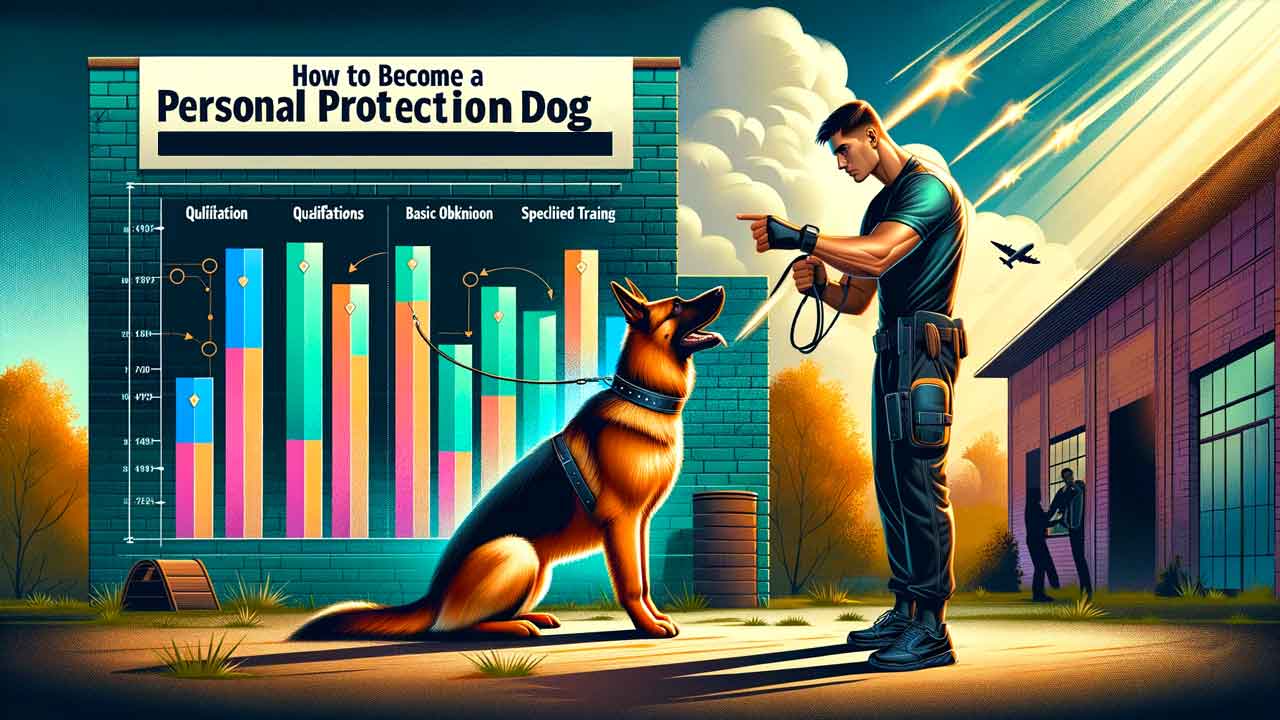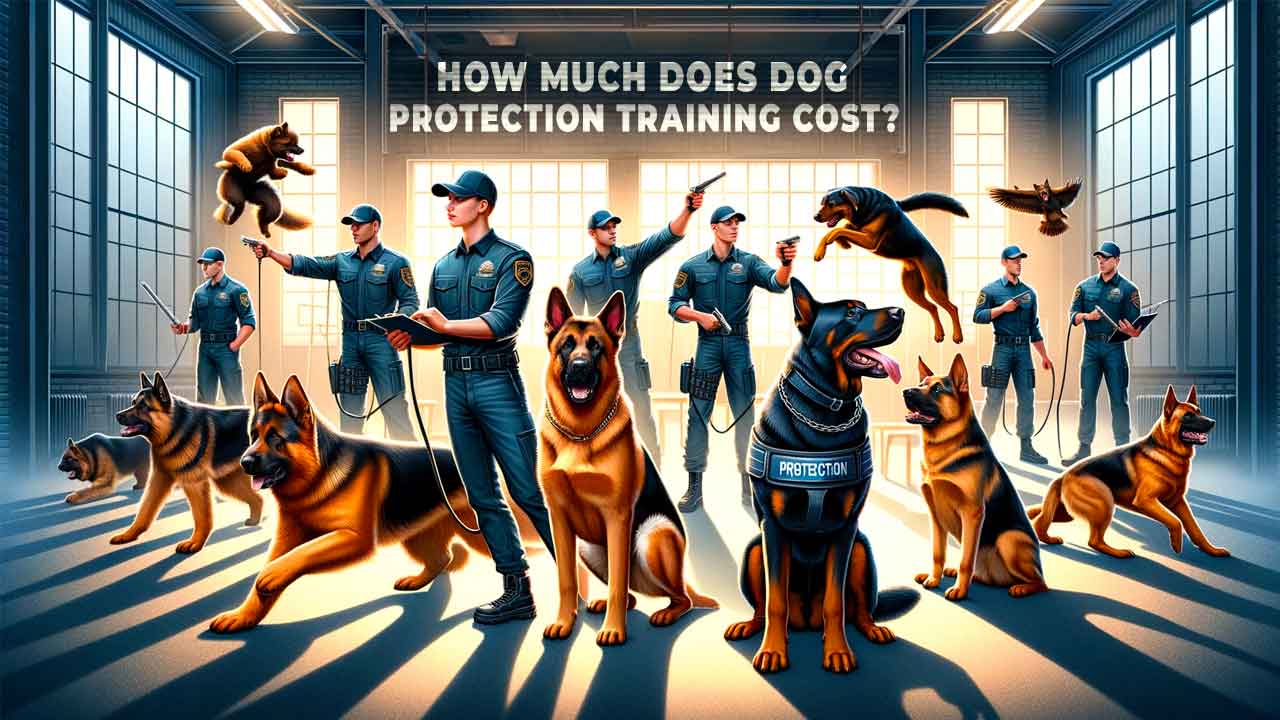How to Become a Personal Protection Dog Trainer
Key Takeaways:
| Aspect | Key Point |
|---|---|
| Qualifications | Gain experience and certifications |
| Training Basics | Teach obedience and protection skills |
| Specialization | Understand personal protection nuances |
| Resources | Utilize courses and practical learning |
Discovering the Path to Become a Personal Protection Dog Trainer
Going on a journey to become a personal protection dog trainer is a challenging yet rewarding adventure. This profession requires a deep understanding of canine behavior and a specialized skill set to effectively train dogs for personal security. Here, we’ll explore the essential steps and strategies to excel in this field.
Acquiring Essential Qualifications
The first step in this journey involves gaining substantial experience and obtaining relevant certifications. Aspiring trainers should aim for a minimum of 300 hours of dog training experience, with at least 75% of that time spent leading classes as a head trainer. Additionally, passing a professional examination is crucial for certification, which demonstrates a comprehensive understanding of dog behavior and training techniques.
Specialized Training Courses
Enrolling in specialized courses is a pivotal part of the process. For instance, an 8-week Protection Dog Trainer Course, costing around $7,375, offers in-depth knowledge and practical experience. These courses are designed to equip trainers with the necessary skills to handle various scenarios and effectively train dogs for personal protection.
Building a Foundation with Basic Obedience
Before delving into the specifics of protection training, it is vital to establish a foundation of basic obedience in dogs. This includes teaching them to respond to commands such as sit, lie down, come, and heel without a leash. Additionally, mastering commands like “bark” and “leave it” are essential for developing control and responsiveness.
Understanding the Nuances of Personal Protection Training
Personal protection dog training is more than just teaching basic commands. It involves training dogs to recognize and respond appropriately to potential threats. This includes establishing territorial boundaries, training dogs to react suitably to guests, and practicing scenarios with a mock “intruder” to test and strengthen their protective instincts.
Continuous Learning and Adaptation
The field of dog training, especially in personal protection, is continually evolving. Therefore, continuous learning and staying updated with the latest training methods and canine behavioral studies are imperative.

This bar chart visualizes the key components in becoming a personal protection dog trainer. It highlights the relative importance or hours dedicated to each aspect, such as qualifications, training basics, specialization, and resources. This provides a clear perspective on where the focus should be placed during the training and qualification process.
Continuing with the article, we will delve deeper into the practical aspects of training, available resources, and navigating the complexities of personal protection dog training.
Practical Aspects of Protection Dog Training
Implementing Advanced Training Techniques
After establishing a solid foundation of basic obedience, the next phase involves more advanced techniques specifically tailored for personal protection. This includes:
- Situational Training: Preparing the dog for various scenarios they might encounter while protecting an individual or property.
- Controlled Aggression: Teaching the dog to exhibit aggression on command and, more importantly, to cease aggressive behavior when commanded.
- Environmental Familiarization: Exposing the dog to different environments to ensure they remain effective regardless of the setting.
Resources and Ongoing Education
For aspiring trainers, numerous resources are available to aid in their journey. These include:
- Specialized Training Programs: As mentioned, intensive courses like the 8-week and 12-week Protection Dog Trainer Courses provide a structured learning path.
- Online Resources: Websites like EasyDogTrainingMethods.com offer a wealth of information. Relevant articles such as how to train a Dogo Argentino and training dogs as service animals can be particularly insightful.
Navigating Complexities in Personal Protection
The complexities of personal protection dog training encompass understanding the psychology of both the dog and the potential threats. A trainer must be adept at reading canine behavior and adjusting training methods accordingly.
Additional Skills and Knowledge
Beyond dog training, personal protection trainers should also have:
- Basic Knowledge of Security Protocols: Understanding human security measures can greatly enhance the effectiveness of a protection dog.
- First Aid Skills: Both for humans and dogs, as accidents can happen during training.
Final Insights and Utilizing Available Resources
Key Advice for Aspiring Personal Protection Dog Trainers
Continuous Improvement and Networking
- Stay Informed: Keep abreast of the latest techniques and research in dog behavior and training.
- Network: Connect with experienced trainers and join relevant organizations to stay engaged with the community.
Ethical Considerations
- Responsible Training: Ensure that the training methods used are humane and ethical.
- Client Education: Educate clients about the responsibilities and expectations of owning a personal protection dog.
Leveraging Resources from EasyDogTrainingMethods.com
EasyDogTrainingMethods.com is a treasure trove of information for aspiring dog trainers. Specific articles that can aid in this journey include:
- How to Become a Dog Trainer in Missouri: Offers insights into the legal and educational requirements in a specific region.
- Train a Dog to Ignore Distractions: A crucial skill for personal protection dogs.
Conclusion and Final Thoughts
Becoming a personal protection dog trainer is a commitment to continuous learning, ethical training, and a deep understanding of canine psychology. It’s a path that demands dedication but offers immense rewards in terms of personal fulfillment and the difference made in the lives of dogs and their owners.
Remember, the key to success in this field is not just about training dogs, but also about building trust, understanding, and a strong bond between the dog and its handler.
For more information and guidance on dog training, explore the vast resources available on EasyDogTrainingMethods.com. Whether you’re interested in specific training methods like gluten detection dog training or squirrel dog training, this site offers valuable insights to enhance your training journey.
Summary and Final Considerations
In conclusion, becoming a successful personal protection dog trainer encompasses a multifaceted approach that includes acquiring proper qualifications, mastering basic and advanced training techniques, understanding the unique aspects of personal protection, and utilizing available resources for continuous improvement.
Remember, the journey to becoming a proficient personal protection dog trainer is not just about the technical aspects of training dogs. It also involves a deep commitment to understanding canine psychology, ethics in training, and fostering a harmonious relationship between dogs and their handlers.
For anyone aspiring to enter this rewarding field, leveraging the resources and insights provided by EasyDogTrainingMethods.com can be invaluable. From detailed guides on specific training techniques to insights into the broader aspects of dog training, the website offers a comprehensive platform for both novices and experienced trainers alike.







